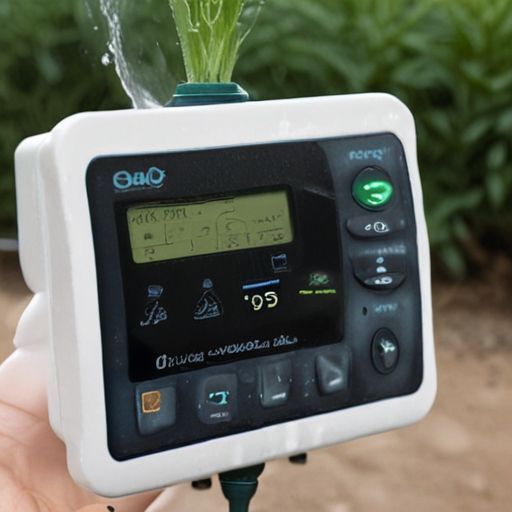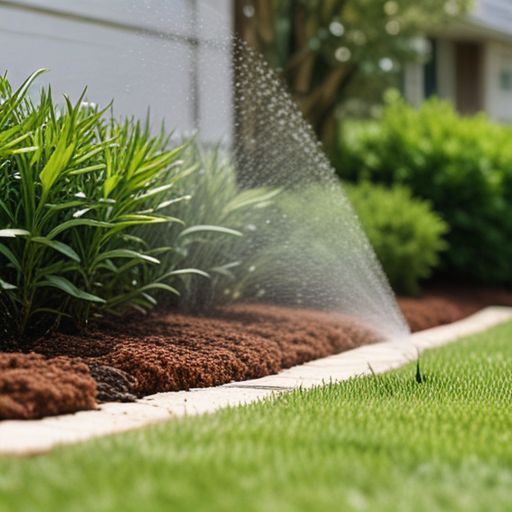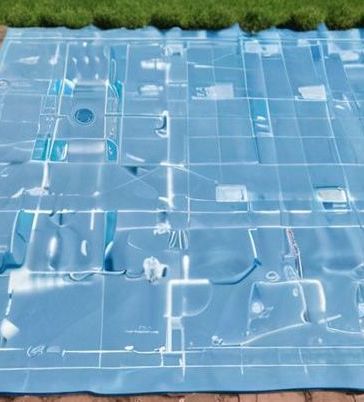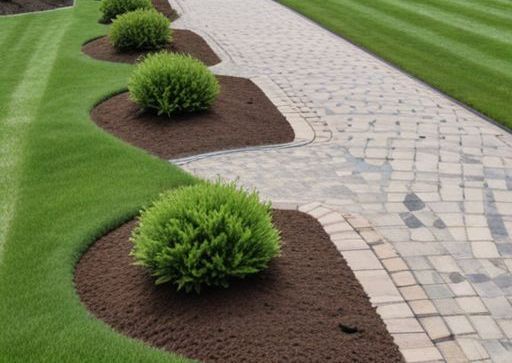Irrigation design
This aspect plays a crucial role in optimizing water usage for landscaping. When incorporating smart controllers, it's essential to ensure correct design to fully leverage their capabilities. These controllers rely on accurate zoning and scheduling, tailoring watering to specific areas and times, and enhancing water efficiency. Selecting plants suited to the climate zone is equally vital, as they are naturally adapted to local conditions, requiring less water and maintenance.
In the realm of irrigation efficiency, a strategic approach involves limiting high-volume irrigation to 50% of the system. This ensures that water is distributed effectively while preventing overuse, contributing to sustainability and cost-effectiveness. By balancing high-volume and low-volume irrigation, the system can cater to the diverse needs of different plants and soil types, fostering a healthier landscape.
Choosing a qualified landscaper for irrigation setup is a wise decision. Landscapers bring expertise in understanding the unique characteristics of a property, considering factors like soil composition, sunlight exposure, and plant types. Their professional insight ensures that the irrigation system is tailored to the specific needs of the landscape, promoting optimal plant health while minimizing water waste. Collaborating with a landscaper not only ensures proper installation but also provides ongoing maintenance and adjustments, guaranteeing a sustainable and thriving outdoor environment.
Proper Installation:
When crafting an irrigation system, a savvy approach involves employing the technique of pulling pipe wherever feasible, minimizing soil disruption, and maintaining the integrity of the landscape. It's not just about water delivery; it's about respecting the earth beneath. Adequate soil protection measures are essential during installation, safeguarding against erosion and maintaining the health of the surrounding environment.
Executing the irrigation system installation aligns with meticulous adherence to the designed plans. Each detail matters, and precision is the key to making sure that the system functions seamlessly, delivering water where and when needed. Incorporating an EPA WaterSense labeled smart controller is a strategic move, utilizing advanced features like evapotranspiration and soil moisture sensors. It's not just about technology; it's about intelligent water management that responds to the unique conditions of your landscape.
The professional touch extends to the verification of static pressure and flow, establishing that the system operates optimally. Adjustments are made as needed, guaranteeing that water is distributed efficiently without undue stress on the infrastructure. Adapting the system to any changes in plant design reflects a proactive approach and that the irrigation aligns with the evolving needs of the landscape. Engaging with local water providers adds a layer of practicality, exploring potential rebates for irrigation equipment and promoting sustainable practices that benefit both the client and the environment.
Irrigation Management;
In the world of landscape care, it's not just about creating a stunning outdoor space but safeguarding its sustained vitality through thoughtful management and maintenance schedules for watering. Imagine it as crafting a personalized care plan for each plant – a tailored approach that considers their unique thirst for hydration. By having robust watering schedules in place, we're not just irrigating; we're nurturing, making sure that your landscape receives the right amount of moisture, fostering a thriving, green haven.
Enter the heartbeat of modern irrigation – the smart system. It's not just about pipes and valves; it's about a vigilant companion that continually monitors and interprets data to keep your landscape flourishing. This should be a dynamic relationship with the person you hire to help will all the faucets of your lawn, We will analyze the insights from smart irrigation systems, understanding the language of evapotranspiration and soil moisture. With a personal touch, we adjust run times per zone, orchestrating a finely tuned irrigation symphony that resonates with the specific needs of your plants. It's a fusion of cutting-edge technology and hands-on expertise, ensuring that your landscape not only survives but thrives.
As the seasons change in Texas, so should the rhythm of your landscape's needs. This is where the seasonal maintenance dance comes into play. It's not just about checking off tasks on a list; it's about a commitment to the health and longevity of your irrigation system. Georgetown Landscapers roll up our sleeves to address potential clogs and leaks, preventing disruptions to the seamless flow of water. It's a proactive approach – a symphony of care that keeps your irrigation system in harmony with the seasons. Think of it as an annual tune-up, confirming that your landscape remains a vibrant, ever-evolving masterpiece.
The benefits of a good design, installation, and management of regular inspections drastically reduce your water bills, future pest problems, and possible disruptions to the system you and your landscaper put into place from the very start of the project. Not to mention the environmental benefits we can all benefit from while reducing water, run off and nutrient leaching.



